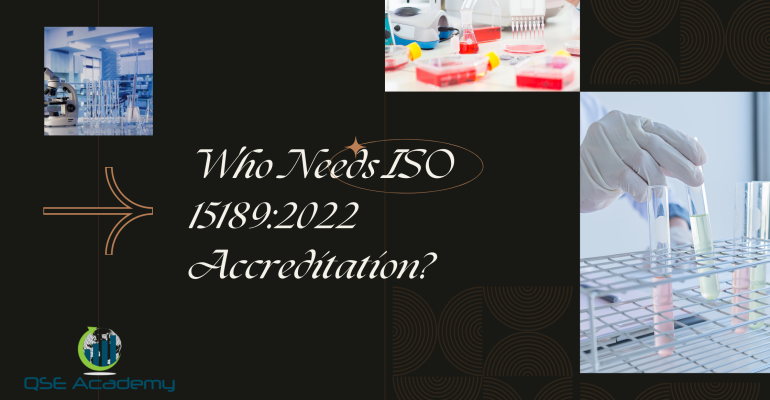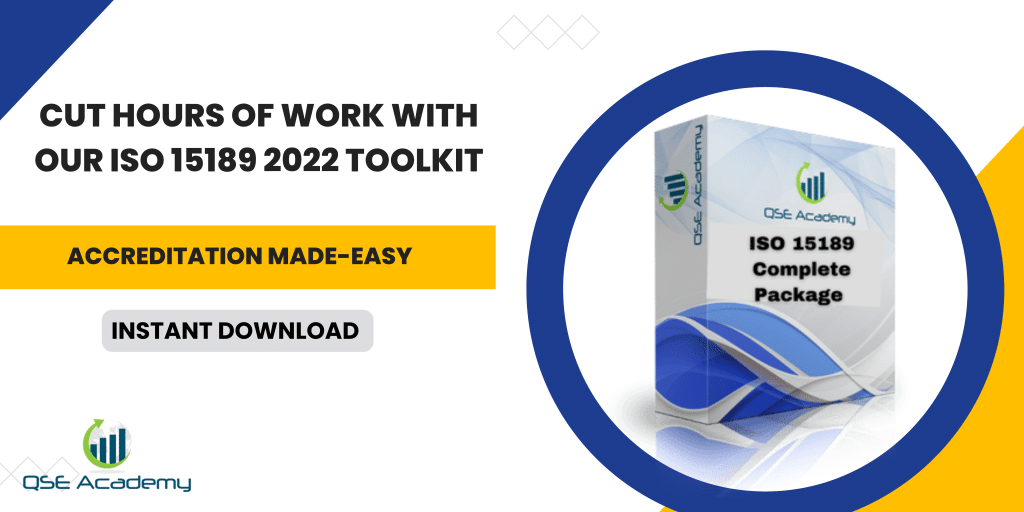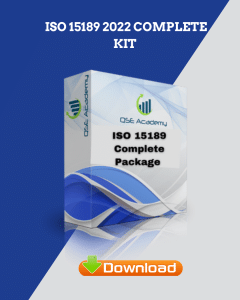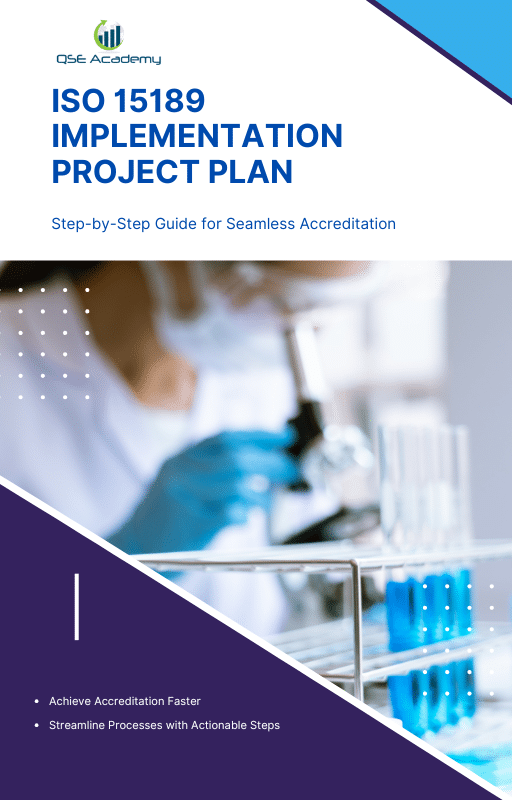Who Needs ISO 15189:2022 Accreditation?
Last Updated on October 22, 2025 by Hafsa J.
Why ISO 15189 Accreditation Matters More Than Ever
Every week, I get the same question from lab directors and quality managers:
“Do we really need ISO 15189 accreditation?”
It’s a fair question—especially if your lab already follows national regulations or holds certifications like CLIA or ISO 9001. On the surface, it might seem like overkill. But here’s the thing: ISO 15189 isn’t just another box to tick. It’s the international benchmark for proving that your laboratory is competent, credible, and consistently delivering accurate medical results.
In my experience, labs that go through ISO 15189 accreditation don’t just improve their paperwork—they transform how they operate. They become more organized, their teams more confident, and their processes more transparent. It’s not about passing an audit; it’s about building trust with doctors, patients, and global partners.
In this article, we’ll break down exactly who needs ISO 15189, why it’s becoming essential across borders, and how even small labs can use it to strengthen quality and reputation.
By the end, you’ll know whether ISO 15189 accreditation is just a “nice to have” for your lab—or a strategic move you can’t afford to ignore.
Understanding ISO 15189:2022 – Purpose and Global Role
Before deciding whether you need ISO 15189 accreditation, it helps to understand what the standard actually stands for.
ISO 15189:2022 is an international standard developed specifically for medical laboratories. Its purpose is simple but powerful: to ensure that every test result produced is technically valid, clinically relevant, and safe for patient use.
Unlike general quality standards like ISO 9001 or technical standards like ISO/IEC 17025, ISO 15189 brings both worlds together. It merges the technical competence of laboratory testing with the ethical and clinical responsibilities of patient care.
Here’s how it fits in the bigger picture:
-
ISO 9001 = General quality management (any industry).
-
ISO/IEC 17025 = Testing & calibration competence.
-
ISO 15189 = Medical laboratory competence + patient safety.
In other words, ISO 15189 is the bridge between laboratory science and healthcare outcomes.
Pro Tip:
Think of ISO 15189 as more than a checklist. It’s a mindset—a way to build a culture where accuracy, accountability, and patient impact drive every decision.
Example:
One hospital I worked with used to treat accreditation as a formality. After adopting ISO 15189:2022, they discovered several process risks—like delayed sample labeling—that they’d never noticed before. Fixing those small issues improved both efficiency and diagnostic reliability.
Now that we’ve clarified what ISO 15189 is all about, let’s talk about the types of laboratories that directly need it.
Laboratories That Require ISO 15189 Accreditation – Core Categories
So, who actually needs ISO 15189 accreditation?
In simple terms—any laboratory that performs medical testing on human samples for diagnosis, treatment, or health assessment.
Here are the core categories:
1. Clinical Diagnostic Laboratories
These are your pathology, microbiology, hematology, and molecular testing labs. ISO 15189 ensures the validity of their results, from sample collection to result interpretation. Doctors rely on these labs every day to make treatment decisions—so the accuracy and consistency of results aren’t optional.
2. Hospital Laboratories
Hospitals that run their own labs (for inpatients or emergency care) need ISO 15189 to prove that patient test results are reliable and traceable. Accreditation demonstrates that their results meet the same standard as independent diagnostic centers.
3. Reference and Specialty Laboratories
Large-scale reference labs and specialized testing facilities—like those handling genetics, immunology, or infectious diseases—use ISO 15189 to prove technical competence and data integrity, especially when results are shared internationally.
4. Point-of-Care and Satellite Labs
Smaller testing units within hospitals, clinics, or mobile setups fall under the same expectation for quality and competence. Even if testing happens outside the main lab, ISO 15189 ensures that the same quality system applies everywhere.
Pro Tip:
Size doesn’t matter here. I’ve seen two-person labs and 200-staff hospital networks both achieve ISO 15189 accreditation. The key is consistency—following the same validated processes every time, no matter the scale.
Now that we’ve covered the obvious medical labs, let’s explore the organizations that may not realize they also benefit from ISO 15189.
Organizations That Benefit Indirectly – Beyond Traditional Labs
Here’s where many people are surprised:
ISO 15189 isn’t just for hospitals and diagnostic labs. Any organization that performs or relies on human specimen testing—even indirectly—can benefit from accreditation.
Let’s look at a few examples:
1. Clinical Research Organizations (CROs)
CROs conducting clinical trials often analyze patient samples as part of study protocols. ISO 15189 accreditation assures sponsors and regulators that test results are scientifically valid and ethically managed. It’s becoming a must-have for international trial participation.
2. University and Teaching Hospitals
Academic institutions that combine education, research, and clinical testing use ISO 15189 to demonstrate that their training and research data meet medical-grade reliability standards.
3. Public Health and Forensic Laboratories
These labs handle testing that influences population health decisions or legal outcomes. ISO 15189 ensures both accuracy and defensibility of results—critical for public trust.
4. Mobile and Telemedicine Testing Units
As healthcare shifts toward digital and remote testing, quality oversight becomes harder. ISO 15189 provides a structured system to manage sample integrity, transport, and result verification—even in decentralized setups.
Pro Tip:
Even if your lab doesn’t deal with direct patient care, ISO 15189 accreditation boosts credibility with regulators, hospitals, and global partners. It signals that your results are fit for clinical use.
Example:
A biotech startup analyzing blood markers for chronic disease research achieved ISO 15189 accreditation before launching commercially. That one move made them eligible for partnerships with hospitals and pharmaceutical companies that would’ve otherwise overlooked them.
Now that we’ve covered who benefits, let’s talk about why ISO 15189 is quickly becoming a global requirement—not just a competitive advantage.
Why ISO 15189 Accreditation Is Becoming a Global Requirement
Not long ago, ISO 15189 was considered a “nice-to-have.” Today, in many parts of the world, it’s quickly turning into a must-have for medical laboratories.
Here’s why.
1. Regulators Are Making It Mandatory
Health authorities in Europe, the Middle East, Africa, and parts of Asia now require ISO 15189 accreditation for laboratories involved in national screening programs, hospital diagnostics, and even COVID-19 testing.
For example:
-
The European Union recognizes ISO 15189 as the benchmark for medical testing competence.
-
Saudi Arabia, the UAE, and South Africa require it for national health labs.
-
Even pharmaceutical sponsors now demand it for labs supporting clinical trials.
2. Global Recognition Through ILAC-MRA
ISO 15189 accreditation is issued by national bodies under the International Laboratory Accreditation Cooperation (ILAC). Through ILAC’s Mutual Recognition Arrangement (MRA), accredited labs gain worldwide acceptance—meaning test results can be trusted across borders without retesting.
3. Hospitals and Clients Demand It
Healthcare systems, insurance providers, and international clients increasingly prefer or contract only accredited laboratories. It’s their assurance of reliable, defensible data—especially when results impact patient treatment or regulatory decisions.
Pro Tip:
If your lab handles international projects, donor-funded programs, or clinical research, ISO 15189 isn’t optional anymore—it’s the entry ticket.
Example:
A public health lab in Kenya achieved ISO 15189 to qualify for WHO reference work. Within a year, they were chosen as a regional testing center for malaria surveillance. Accreditation didn’t just improve their systems—it expanded their impact.
Now that you see how the world is moving toward ISO 15189, let’s explore the practical benefits that accreditation brings to laboratories of all sizes.
Benefits of Accreditation – Practical Gains for Medical Laboratories
Every lab wants to deliver accurate results, but ISO 15189 accreditation helps you prove it — consistently. Beyond the certificate, the benefits are real, measurable, and long-term.
Here’s what I’ve seen happen when labs get accredited:
1. Operational Efficiency
Processes become streamlined. Errors drop. Rework decreases. You spend less time firefighting and more time improving. ISO 15189 forces you to document, monitor, and refine every workflow — which means smoother operations and fewer surprises during audits.
2. Clinical Reliability
Accreditation validates that your results are traceable, reproducible, and clinically sound. Doctors can trust your reports without second-guessing, and patients benefit from faster, more reliable diagnoses.
3. Market Advantage
In competitive healthcare and diagnostics, ISO 15189 sets you apart. Hospitals, pharma companies, and research sponsors often prefer accredited labs because it saves them the risk and cost of revalidation.
4. Staff Competence and Morale
When roles, responsibilities, and expectations are clearly defined, people work better. Training programs and competency checks under ISO 15189 help your team grow professionally while building confidence in their work.
5. Patient Safety and Trust
Ultimately, this is the biggest win. A quality-managed lab reduces the risk of misdiagnosis, protects patient data, and creates a safety culture that patients can rely on.
Pro Tip:
Use ISO 15189 not just as a compliance goal but as a performance improvement system. The more you analyze data (like turnaround time, sample rejection rates, and CAPA trends), the stronger your lab becomes.
Example:
A regional hospital laboratory I worked with cut their sample turnaround time by 40% within six months of implementing ISO 15189 procedures — without adding staff. The secret? Clarity, consistency, and communication.
Now that you know the tangible benefits, let’s clear up a few common misconceptions that often stop labs from pursuing accreditation.
Common Misconceptions – Who Thinks They Don’t Need ISO 15189
You’d be surprised how many labs dismiss ISO 15189 because of a few common myths.
Let’s tackle the biggest ones I hear over and over.
Myth #1: “We already have CLIA or national approval — we’re covered.”
Not quite. CLIA or local health ministry licenses prove that you meet legal requirements to operate.
ISO 15189 goes further — it proves technical competence and ensures your results are recognized internationally.
Think of CLIA as your driver’s license, and ISO 15189 as your international driving permit. You need both if you want to go global.
Myth #2: “ISO 15189 is only for big hospitals.”
Absolutely false. Small community labs and private clinics often see the fastest return on investment because ISO 15189 gives them a clear system for quality, documentation, and efficiency.
I’ve seen two-person pathology labs use accreditation to win contracts from major hospitals simply because they could demonstrate reliability.
Myth #3: “We’re too small to afford it.”
The truth? You can’t afford not to. Accreditation pays off by reducing errors, improving reputation, and attracting clients. Plus, many accreditation bodies now offer scalable options for small labs, with flexible audit scopes.
Myth #4: “It’s all paperwork.”
Documentation is part of it—but the real goal is control and consistency. The paperwork just helps you prove it. Once your QMS is established, it actually makes operations easier, not harder.
Pro Tip:
Don’t wait for a regulation to force you into ISO 15189. Labs that start early build stronger systems and attract better partnerships long before accreditation becomes mandatory.
Now that we’ve cleared up the misconceptions, let’s discuss when ISO 15189 stops being a compliance choice—and becomes a strategic business decision.
When ISO 15189 Becomes a Strategic Decision
At some point, ISO 15189 stops being just about compliance — and becomes a business growth strategy.
For many labs, this shift happens naturally as they expand services, attract new clients, or enter international collaborations.
Here’s when accreditation becomes a strategic move rather than a regulatory checkbox:
1. When You’re Expanding Into New Markets
If your lab plans to serve clients beyond your home country or partner with global healthcare organizations, ISO 15189 is your entry pass. It tells international stakeholders, “Our results meet your standards.”
Example:
A Philippine-based diagnostic lab secured long-term contracts with overseas clinical research sponsors after achieving ISO 15189. Before accreditation, they were invisible; after it, they were trusted.
2. When You Want to Build Patient and Client Trust
Accreditation signals reliability. Patients, physicians, and healthcare partners all feel more confident knowing your lab follows globally recognized standards. It’s not just credibility—it’s peace of mind.
3. When You’re Integrating Other Standards (ISO 9001 or ISO/IEC 17025)
If your organization already uses ISO 9001 for quality management or ISO/IEC 17025 for testing competence, adding ISO 15189 aligns everything under one system. It strengthens consistency and simplifies audits.
4. When You’re Seeking Operational Excellence
Labs aiming for efficiency, accountability, and continual improvement benefit from ISO 15189’s framework. It creates a culture where quality isn’t a department—it’s how everyone works.
Pro Tip:
Before committing, run a readiness gap analysis. It shows where your lab already aligns with ISO 15189 and what needs fine-tuning. This approach saves time, money, and stress during accreditation.
FAQs – Clarifying Real-World Doubts
1. Is ISO 15189 mandatory for all medical laboratories?
Not everywhere. Some countries make it compulsory for clinical testing, while others treat it as voluntary.
But globally, the trend is clear — healthcare regulators and major clients are increasingly requiring ISO 15189 accreditation for recognition, especially in cross-border projects or clinical research.
So even if it’s not the law yet, it’s quickly becoming the standard expectation.
2. Can a research or university lab apply for ISO 15189?
Yes — as long as it performs testing on human samples that influence medical or diagnostic decisions.
University and teaching hospitals, clinical research centers, and even biotech firms analyzing patient data can all apply.
Accreditation shows your data is not just valid, but also ethically and clinically reliable.
3. Does ISO 15189 replace national approvals like CLIA or local licenses?
No. ISO 15189 complements them.
Think of it this way:
-
CLIA or national approval = permission to operate legally.
-
ISO 15189 = proof of international competence and quality excellence.
Many successful labs hold both—it’s the most powerful combination for compliance and credibility.
4. How long does it take to get accredited?
It depends on your readiness. Some labs achieve it in 6–12 months, while others need longer to align documentation, train staff, and perform internal audits.
A readiness assessment or gap analysis is the best starting point—it tells you exactly how far you are from meeting the standard.
Turning Accreditation into a Competitive Edge
At its core, ISO 15189 accreditation isn’t about ticking boxes — it’s about proving excellence.
It shows that your laboratory doesn’t just deliver results, but does so with accuracy, reliability, and clinical responsibility.
In my experience, labs that embrace ISO 15189 early don’t just survive regulatory changes — they thrive because they’ve built systems that are ready for anything: new tests, new clients, or even new markets.
If your goal is to:
-
Build trust with doctors and patients,
-
Gain recognition from international partners, and
-
Create a culture of continual improvement,
then ISO 15189:2022 isn’t optional — it’s your roadmap.
Pro Tip:
Start small but start smart. Begin with a gap analysis and internal training. Once your team understands the “why” behind each requirement, compliance becomes second nature, not a burden.
Final Thought:
Whether you’re a hospital, a research lab, or a startup diagnostic center, ISO 15189 gives your results a global voice — one that says, “We don’t just test, we care about every life our results touch.”
Next Step:
Explore QSE Academy’s ISO 15189 Accreditation Toolkit — complete with templates, implementation checklists, and practical training resources to help your lab reach international standards faster and with confidence.
Whether it’s ISO 9001, ISO 22000, or the cosmetics-focused ISO 22716, I’ve spent my career I’m not here to call myself an expert—I prefer “enthusiast” because I truly love what I do. When I’m not writing about standards, you’ll probably find me playing Piano 🎹, connecting with people, or diving into my next big project💫. I’m an engineer specialized in the food and agricultural industry
make ISO standards less intimidating and more approachable for everyone.
turning complex jargon into clear, actionable steps that businesses can actually use.
There’s something incredibly rewarding about helping people navigate food safety and quality management systems
in a way that feels simple, practical, and even enjoyable.
I have a Master’s in QHSE management and over 12 years of experience as a Quality Manager
I’ve helped more than 15 companies implement ISO 9001, ISO 22000, ISO 22716, GMP, and other standards
My clients include food producers, cosmetics manufacturers, laboratories, and service companies
I believe quality systems should be simple, useful, and efficient.













